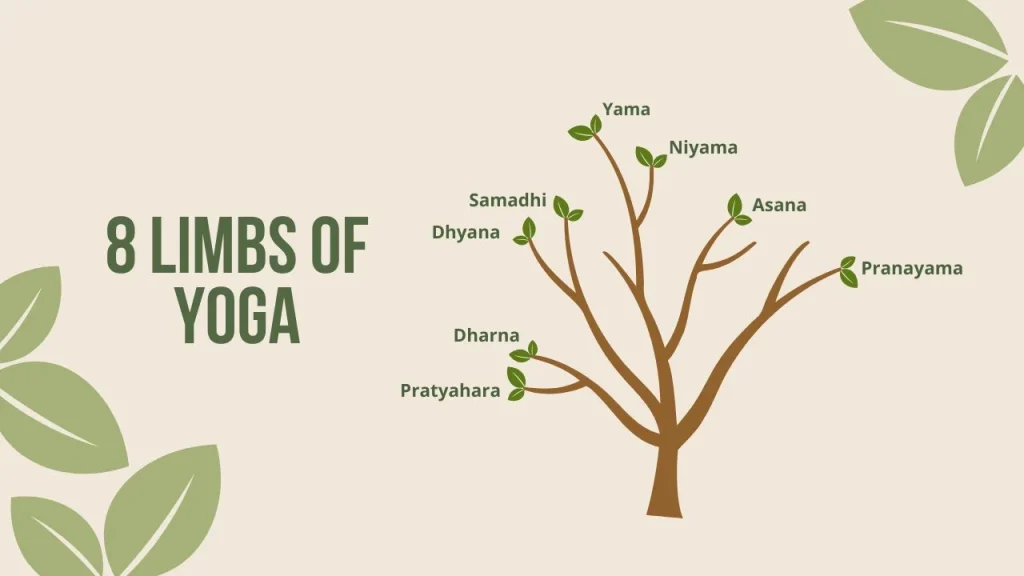The Eightfold Path (Ashtanga) outlined in Patanjali’s Yoga Sutras (circa 200 CE) is yoga’s original roadmap for enlightenment. More than just physical postures, this systematic approach integrates ethics, self-discipline, and meditation for profound transformation.
1. Yama (Ethical Restraints)
Moral principles for interacting with the world:
-
Ahimsa – Non-violence (in thought, word, action)
-
Satya – Truthfulness
-
Asteya – Non-stealing (time, energy, ideas)
-
Brahmacharya – Right use of energy (often celibacy/moderation)
-
Aparigraha – Non-possessiveness
Modern Application:
-
Digital minimalism (Aparigraha)
-
Conscious consumerism (Asteya)
2. Niyama (Personal Observances)
Inner disciplines for self-purification:
-
Saucha – Cleanliness (body, mind, environment)
-
Santosha – Contentment
-
Tapas – Disciplined practice
-
Svadhyaya – Self-study (scriptures + introspection)
-
Ishvara Pranidhana – Surrender to higher purpose
Practice Example:
-
Journaling for Svadhyaya
-
Cold showers as Tapas
3. Asana (Physical Postures)
-
Originally meant “steady seated pose” for meditation
-
Modern interpretation includes all yoga poses
-
Purpose: Prepare body for prolonged stillness
Key Sutra: “Sthira sukham asanam” (Posture should be steady and comfortable)
4. Pranayama (Breath Control)
Science-Backed Benefits:
-
Balances nervous system
-
Increases HRV (heart rate variability)
-
Purifies energy channels (nadis)
Techniques:
-
Nadi Shodhana (alternate nostril)
-
Kapalabhati (skull-shining breath)
5. Pratyahara (Sense Withdrawal)
-
Turning attention inward from external stimuli
-
Modern Parallel: Digital detox practices
Exercise:
Eat one meal/week in silence, focusing only on flavors/textures.
6. Dharana (Concentration)
-
Single-pointed focus (candle flame, mantra, breath)
-
Brain Change: Increases gray matter in prefrontal cortex
Practice:
Trataka (fixed-gaze meditation)
7. Dhyana (Meditation)
-
Uninterrupted flow of awareness
-
Difference from Dharana:
-
Dharana = Focusing on a point
-
Dhyana = Becoming one with the focus
-
8. Samadhi (Blissful Union)
-
Temporary (Savikalpa): Ecstatic oneness
-
Permanent (Nirvikalpa): Enlightenment
Modern Interpretation:
“Flow state” experienced by athletes/artists
Why This System Matters Today
-
Counteracts digital distraction through Pratyahara
-
Reduces anxiety via breathwork (Pranayama)
-
Builds ethical resilience with Yama/Niyama

“Yoga is the cessation of the fluctuations of the mind.”
— Patanjali Yoga Sutras 1.2
Deepen Your Practice in our 8-Limb Masterclass:
-
Live Sutra discussions
-
Meditation intensives
-
Ethical dilemma workshops
#EightLimbs #SpiritualGrowth #ClassicalYoga

